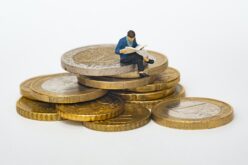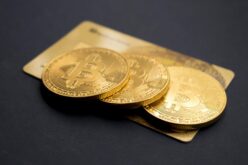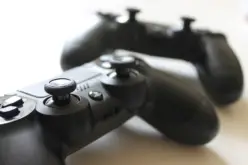Mapping Hygiene: Geospatial Technology in Rug Cleaning
Geospatial technology, the cornerstone of modern digitization, has made its mark in hygiene maintenance, particularly in rug cleaning. Subtle yet absolutely revolutionary, this technology can improve not only efficiency but also the quality of cleaning processes in surprising ways. If you haven’t heard of geospatial mapping before when it comes to keeping your rugs spick-and-span, you are about to have your mind blown.
Geospatial Technology Defined
Geospatial technology refers to tools used to gather and interpret geographic information. You might be wondering now, how would a technology that maps geographical data help with hygiene or specific tasks like rug cleaning? You’re about to find out.
Geospatial tech isn’t just about positioning. In fact, it’s concerned with all aspects of geographic data. This includes analysis, manipulation, and visualization. And yes, even measures to enhance hygiene fall under this wide scope!
Why Mapping Hygiene
You may think that keeping a clean house is too mundane or ordinary a task to involve sophisticated tech like geospatial mapping. But consider the potential benefits when such technology is combined with regular maintenance tasks like rug cleaning.
Data-driven approaches optimized by geospatial tools can map contamination routes on surfaces that include rugs and carpets. By determining these paths, appropriate action can take place for their cleaning or sterilization.
Geospatial Tech and Cleaning
The wonders of geospatial technologies reach beyond mere coordinate mapping. In fact, they help identify patterns of physical distribution by analyzing spatial relationships. Applied in contexts like rug cleaning, these technologies can provide detailed information on how to address hygiene matters and subsequently, improve air quality indoors.
With data input, geospatial tech can greatly enhance cleaning speed, efficiency, and even safety protocols. It’s all about knowing where to clean, when to clean it and what methods should be applied.
Role of Rug Cleaning
Cleaning all types of rugs is a fundamental process in ensuring cleanliness and order in living spaces. In addition to keeping the indoor environment presentable, rug cleaning eliminates dirt, allergens, pollutants caught on rug fibers that can harm health.
This key role underscores the need for more advanced techniques in rug cleaning processes. Imagine improving not only your home’s cleanliness but also your indoor air quality with the help of geospatial technology!
Beyond Rug Cleaning
While you certainly have a part to play as a responsible homeowner, you might want to consider involving a professional. If you go to Rug Wash Specialist you will go beyond the basics and discover the importance of deep cleaning.
Moisture is often locked inside rugs—especially thick ones—where it can breed bacteria causing foul smells over time. Any amount of surface cleaning won’t solve this hidden problem. Truly skilled specialists can use geospatial tech tools in their rug maintenance routine.
A professional cleaner can utilize mapping technologies to detect areas of accumulation– whether it’s dust, germs or moisture. This ensures that no spot goes missed during the cleaning process.
Advancements in Rug Cleaning
Just as technological innovations have transformed many industries, rug cleaning is no exception. Today’s advanced methods leverage geospatial technology – which offers numerous benefits thanks to location-specific data collection and analysis.
From identifying the heavily trafficked areas prone to accumulating grime faster to spotting spots hidden deep within the rug fibers where conventional cleaning methods may fall short – geospatial mapping can be a game changer in rug cleaning.
Geo-tagging in Hygiene Maintenance
Geo-tagging, an application of geospatial technology, tags specific locations or objects on a map. In the context of hygiene maintenance and rug cleaning, geo-tagging could mark areas where rugs are frequently placed or if a particular area is prone to gathering dirt or spillages due to its location.
Armed with this information, more effective cleaning strategies can be formulated. Instead of uniformly cleaning the entire rug, attention can be concentrated on these identified areas— ensuring not only better hygiene but also extending the lifespan of your precious rugs!
Link Between Hygiene and Geography
A major reason why geospatial technology proves powerful in rug cleaning lies in the intricacy of the connection between hygiene and geography. Spatial distribution of dust, dirt, and allergens in your home environment isn’t random. Certain geographical elements—such as proximity to roads, prevailing weather conditions, outdoor foliage, and domestic foot traffic patterns—significantly impact the cleanliness of your rugs.
By utilizing geographic information, you can understand exactly how these external elements affect the cleanliness of your house and customize your rug cleaning schedule accordingly.
Advantages of Geospatial Tech
The use of geospatial technology brings many benefits to rug cleaning. It drives efficiency by allowing cleaners to focus their efforts where they are most needed. This goes a long way toward conserving water and other resources used in the cleaning process.
Furthermore, geospatial tech provides a highly accurate representation of rug contamination routes and helps predict future trouble spots based on historical data analysis. Equally important is its ability to visualize data, making it easier for you to understand and make informed decisions about cleaning routines.
Digital Mapping in Detail
The process of digital mapping entails the creation of digital images interpreted from geographic data. In relation to rug cleaning, this can aid in identifying ‘hot spots’ bearing the most grime and soiling.
But how does this play out practically? Digital mapping uses certain software to analyze patterns and trends related to dirt accumulation on your rugs. It can even shed light on how often cleaning will be required, thereby helping you devise a proactive and effective cleaning plan.
Impact on Cleaning Industry
The advent of geospatial technology has undeniably transformed the cleaning industry. It has necessitated a radical shift in industry players’ mindset—from one based on conventional methods to a more data-centric approach. In the process, it has made cleaning practices more efficient and easier for both companies and their customers.
Geospatial technology offers enhanced precision in cleaning services, which increases customer satisfaction by delivering better results. Additionally, it allows businesses to provide personalized cleaning solutions based on individual needs and circumstances, firmly placing customer convenience at the forefront.
Satellite Imagery Role
While satellite imagery might not directly apply to rug cleaning, it plays a significant role in shaping our understanding of outdoor environmental factors that influence indoor hygiene. Understanding weather patterns, traffic flows, and even vegetation types can give valuable insights about indoor dust and allergen levels that affect the cleanliness of your rugs.
Therefore, by broadening the perspective beyond immediate indoor variables and looking at the bigger geographical picture, you can devise a holistic approach to rug cleaning that adjusts with changing environmental conditions.
Rug Cleaning: A Case Study
A compelling example of geospatial tech in action is seen in a pilot project undertaken by an innovative rug cleaning company here. They used geospatial mapping to identify high-traffic areas in the home– resulting in resource conservation as targeted cleaning could take place rather than generalized efforts.
This strategic approach resulted in greater client satisfaction as well as reduced water and energy usage. Through this case study, the value-added by geospatial technology to traditional cleaning methods is clearly demonstrated.
To Summarize
The integration of geospatial technology into home maintenance practices like rug cleaning is a transformative move that significantly improves cleaning outcomes. It seems clear then, if you are looking to revolutionize your home’s cleanliness and overall hygiene-embracing geospatial tech might just be the game-changer you are seeking.










